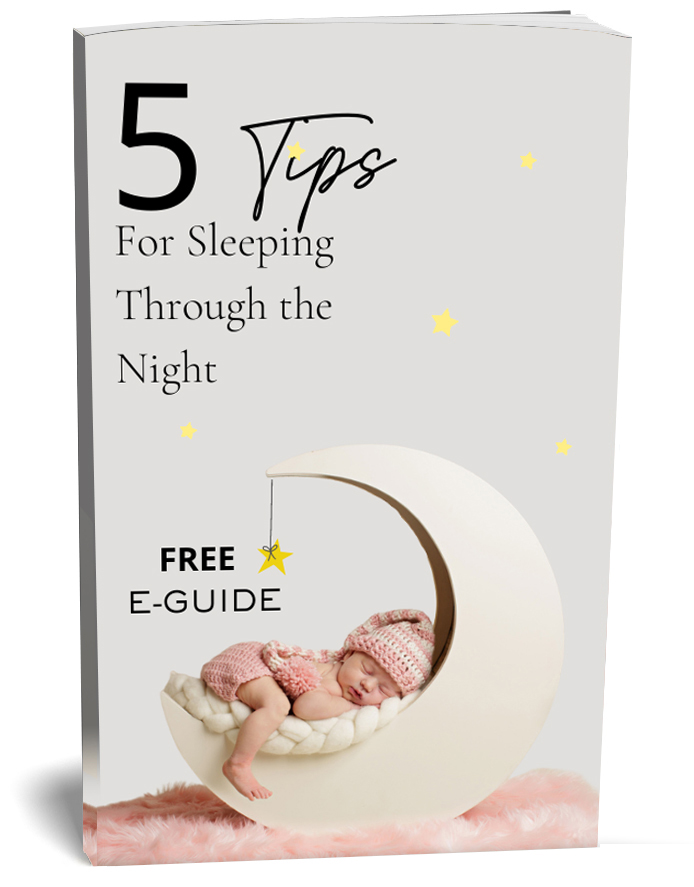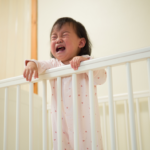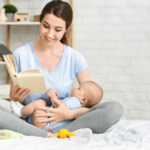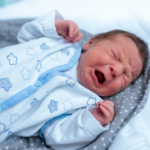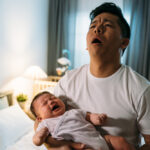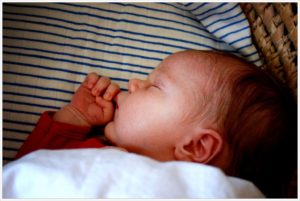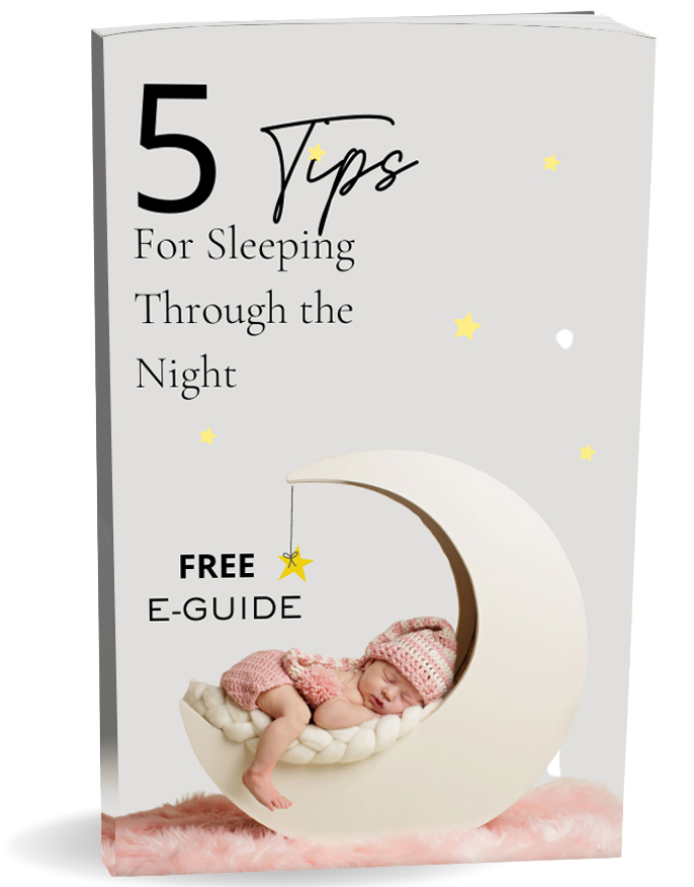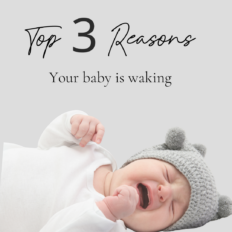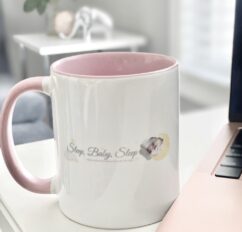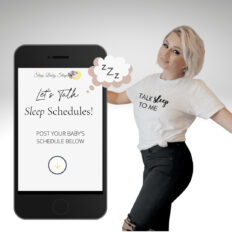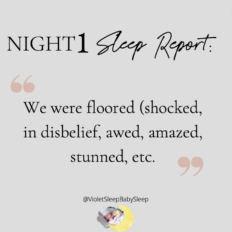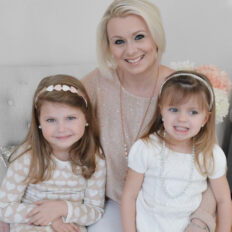
You Sleep Soundly Once Knowing Your Baby Sleep Safely
More than 3,500 infants in the U.S die every year because of their unsafe sleeping habits rather than a car crash. And more surprisingly, according to the experts, some infant products are actually the main cause of injury and even death among babies. This warns us the necessity of promoting safe newborn sleeping habits and doing it as soon as possible.
To reduce the risk of sleep-related baby deaths, please keep the following guidelines in mind:
Plan A Safe Place for Your Baby to Sleep
The safest possible place for your baby to sleep can be in a bassinet or in a crib. If the baby sleeps in your room during their first six months, but you are too busy to prepare a cot for them, here are the tips you can follow to ensure that the baby is sleeping in a safe place:
- Let your baby sleep on their back, and place them on a flat, firm surface, such as a cot blanketed with a tightly fitted mattress sheet cover. Try to only use the mattress specifically made for the baby’s crib.It needs to fit perfectly so there will be no space between the mattress and the cot frame. The shape of a mattress is also important; it needs to be firm when blanketed with a snugly fitted sheet.
- Stop co-sleeping; put your infant in her or his own crib. As we know, a lot of parents and babies sleep in the same bed, so no wonder why this is also the cause of death in babies who are less than three months old.The AAP (American Academy of Pediatrics) suggests that parents and babies sleep in the same place, but not in the same bed, especially for the first year of her or his life (at least for the first six months).
- A crib or a bassinet is the best option for safe newborn sleeping habits and completely satisfies the current safety standards. You won’t have to worry about the cot having the drop-side rails, and more importantly, do not ever think of repairing a crib that is missing something or broken.
- Keep toys and other baby products out of your baby’s crib because a few of them could put her or his at risk of being trapped or strangled. Even loosened bedding and crib bumpers won’t be the exceptions in this case. Removing these things is highly recommended if the baby can sleep in her own cot or bassinet.
- Stop letting your baby sleep in her or his car seat, stroller, or carrier. It’s proven that they can suffocate if sleeping in these objects, and be careful when your baby falls asleep in any of them; take her or him out. Instead, place the baby in her or his crib as soon as possible.
- What about putting her or him on a waterbed, a sofa, or some other soft surfaces? Don’t do that; any pillow or puffy bedding can prevent proper air circulation around his or her face. They can be soft, but unable to prevent your baby from rolling out of bed. Worse than that, they will easily get stuck and choke since it’s hard for them to raise their heads at such a young age.
- Remove all hanging window cords and/or electrical wires near the place where your baby is sleeping. If they’re fixed there, make sure they are kept short, and check that any chain or cord on the curtains should be out of your baby’s reach. Even better than this, try to replace them altogether in their bedrooms. Why? These dangling cords might carry a high risk of strangulation.
To keep your beloved baby safe, it’s recommended to follow the safe newborn sleeping habits below:
- ALONE: Babies need to sleep and nap alone.
- BACK: Place a baby on their back to sleep or nap.
- CRIB: Your babies must always sleep in their own safety-accepted crib, bassinet, or play yard.
How to Place Your Baby to Sleep Safely
- Place your baby to sleep on her back as always until she reaches one year old. Remember that it’s not safe for them to sleep on their side or on their tummy. In case your baby has the habit of rolling over from her back to side or tummy before getting back to her back again, don’t be anxious if she changes position like that while asleep. Besides, tummy time is scientifically proven to motivate the growth of your baby’s neck, arm, and shoulder muscles.
- Dress the baby in light clothes, which means any string or tie should be removed from their pajamas, and don’t put anything on their head. It’s fine to use infant clothing that is made for sleeping; this can keep her warm without having to cover the head or face at night. Maintain the room at a temperature that seems comfortable for you. Once finding out she’s sweating or her chest feels a bit hot, then she might be overheated.
- Offer the baby one pacifier for her sleep and nap. This aids in guarding her against SIDS (Sudden Infant Death Syndrome). In case she does not want a pacifier, don’t force her. It’s also alright if that pacifier suddenly falls out of the baby’s mouth while sleeping. Do not hang it around their neck either.
- To minimize the risk of SIDS, never use special baby objects such as mattress and wedges that claim to reduce the risk. There is no proof they help.
- Relying on home cardiorespiratory monitors as a strategy to minimize the danger of SIDS is a big mistake. These items may help parents track their baby’s heart rate and breathing, but none of the evidence point to the devices preventing the baby from SIDS. However, in some medical conditions, it’s OK for them to have this type of monitor.
- Bring the baby into your bed to feed, and be sure to move your child to his or her own bed. When the baby is in your bed, especially when you might fall asleep, ensure that there are no pillows, bedding sheets, blankets, or any other objects that can cover the baby’s face, neck or can otherwise overheating him or her.
How Possible Is It to Co-Sleep Safely?
Within the first six months, the securest place for the baby to sleep is in a crib or bassinet, in the same room as you. However, most of the parents tend to take their kids into their bed at night. And guess what? You might be one of them when deciding to take a nap with your beloved baby for the day.
There are always ways to guarantee your bed to be safer for co-sleeping:
- Ensure the mattress for the bed is firm and fit snugly against the bed frame. Doing so won’t let any gap show up that your baby can wriggle into at night.
- Never leave the baby sleep alone in your bed.
- Always keep pillows away from their head because it possibly causes them to get hot. According to experts, light sheets would be better than a duvet. If you need to use it, select light clothing for your infant before keeping the duvet at her waist level.
- When co-sleeping, you’re advised to lie on your side and face the baby, with your body slightly curled around her in a C shape. Put the lower arm of yours above the baby’s head and draw up your knees beneath her feet. Sleeping in this posture will prevent parents from rolling forwards and backwards. Also, keep the pillow away from her head.
In addition, pay attention to some vital elements that contribute to the risk of SIDS. Do not share a bed with a baby if:
- You or your partner have just drunk alcohol
- You or your partner have taken any drug to get drowsy
- You or your partner have smoked or inhaled e-cigarette even if you never smoke in bed
- Your infant is still premature (earlier than 37 weeks) or has a low birth-weight (less than 5.5lbs)
Author bio:
Emma is the founder of ShrewdMommy. She loves sharing useful experiences in
raising kids and supporting other moms and dads to develop necessary
skills in parenting. You can find her on Twitter and Facebook to get new updated posts!

